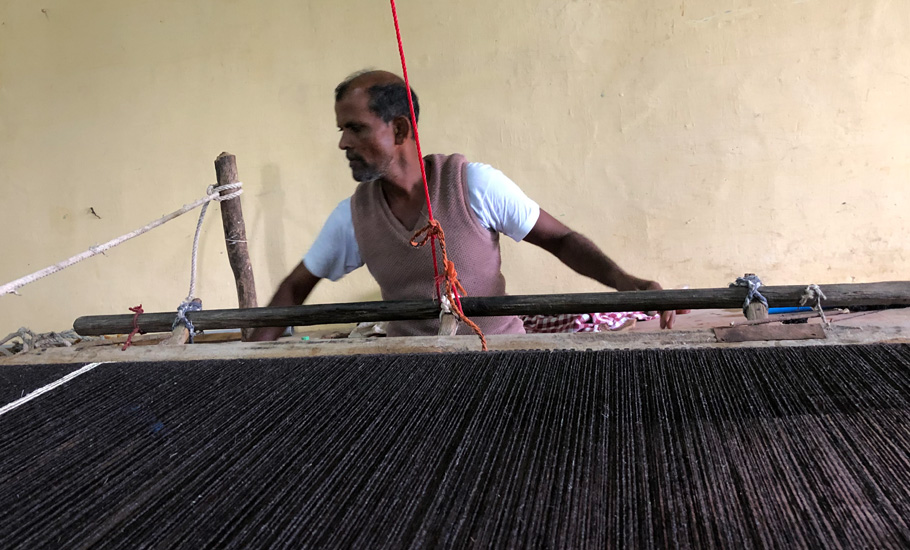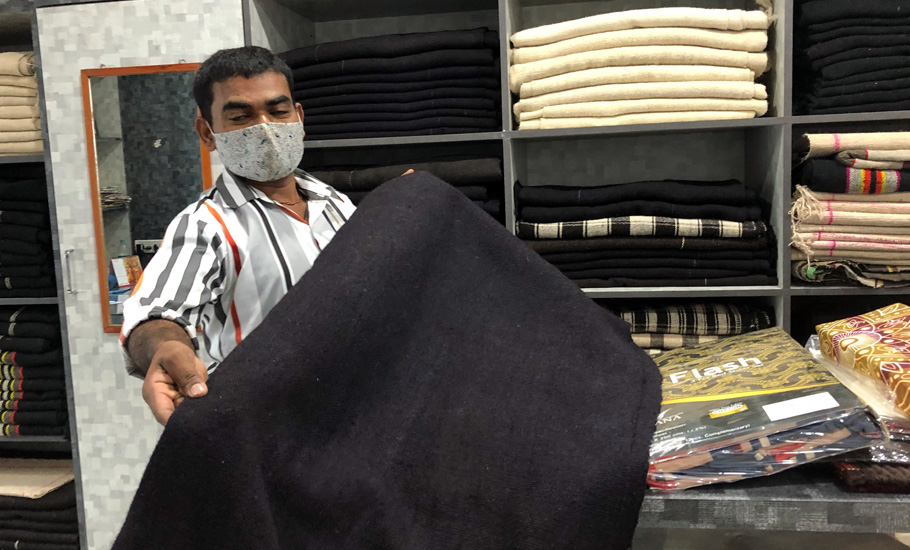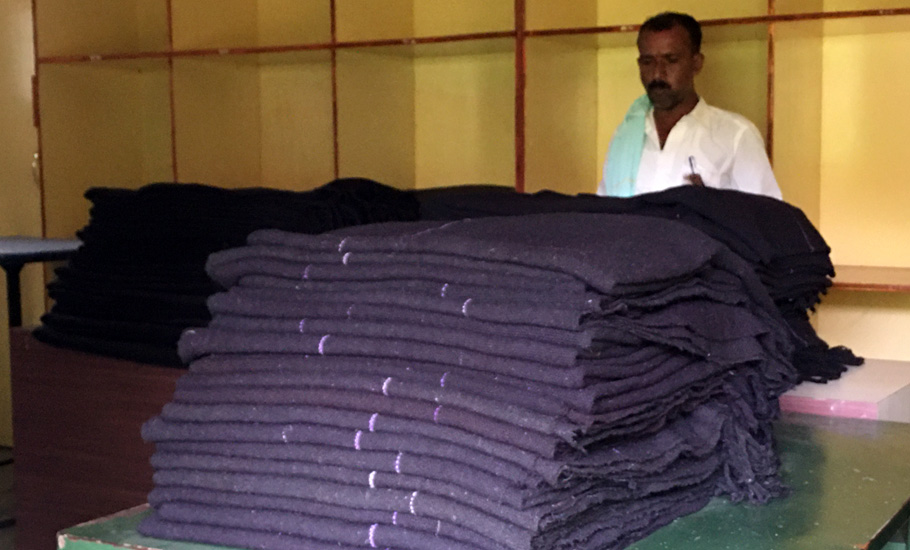
- Home
- India
- World
- Premium
- THE FEDERAL SPECIAL
- Analysis
- States
- Perspective
- Videos
- Sports
- Education
- Entertainment
- Elections
- Features
- Health
- Business
- Series
- In memoriam: Sheikh Mujibur Rahman
- Bishnoi's Men
- NEET TANGLE
- Economy Series
- Earth Day
- Kashmir’s Frozen Turbulence
- India@75
- The legend of Ramjanmabhoomi
- Liberalisation@30
- How to tame a dragon
- Celebrating biodiversity
- Farm Matters
- 50 days of solitude
- Bringing Migrants Home
- Budget 2020
- Jharkhand Votes
- The Federal Investigates
- The Federal Impact
- Vanishing Sand
- Gandhi @ 150
- Andhra Today
- Field report
- Operation Gulmarg
- Pandemic @1 Mn in India
- The Federal Year-End
- The Zero Year
- Science
- Brand studio
- Newsletter
- Elections 2024
- Events
- Home
- IndiaIndia
- World
- Analysis
- StatesStates
- PerspectivePerspective
- VideosVideos
- Sports
- Education
- Entertainment
- ElectionsElections
- Features
- Health
- BusinessBusiness
- Premium
- Loading...
Premium - Events

The twisted yarns and fate of Challakere Kambli weavers
While the quality of Challakere kamblis is good, they cost two-three times higher than the synthetic ones and lose out in the competition.

As clouds gather over the sky in Karnataka’s Chowluru village, a group of weavers at the co-operative society look above their heads. Soon, it starts pouring with vengeance, bringing to a standstill the windy afternoon and the looms that churn out the Challakere Kambli—traditional handwoven blankets made of sheep wool. Monsoon downpours like this mean loss of a day’s earnings for...
As clouds gather over the sky in Karnataka’s Chowluru village, a group of weavers at the co-operative society look above their heads. Soon, it starts pouring with vengeance, bringing to a standstill the windy afternoon and the looms that churn out the Challakere Kambli—traditional handwoven blankets made of sheep wool.
Monsoon downpours like this mean loss of a day’s earnings for the weavers as the moisture content in the wool makes it difficult to negotiate the looms. Those at the co-operative society do not own the looms. They use the society’s shared resources to weave blankets and sell it in the local market.
But unlike the rest, 56-year-old Shankaranna continues to weave. He says his family cannot afford to stop. Three of his family members are engaged in the work. While one of them spins the yarn, Shakaranna and his son take turns to weave the blanket. It takes two days with eight hours of work to weave a single blanket. That is after getting the sheep sheared and refining the wool.
The weavers of Chowluru in Chitradurga district mostly belong to the Kuruba (shepherd) community. The hot and semi-arid region is known for its high density of pastoral communities, whose livelihoods are connected with livestock maintenance and Kambli weaving. Just 15 km away from Andhra Pradesh’s Anantapur, most of them in Chowluru are landless labourers and shepherds who solely depend on weaving for earnings.
The Challakere blankets and rugs are so famous that from Indian Railways to the police to government college hostels, and even politicians, everyone procures them. Not long ago, these blankets were quite popular in Karnataka, Andhra Pradesh, Telangana and Maharashtra. But today, they find very few buyers.
Even the Kambli Bhavan, a dedicated handloom store in Bengaluru to promote and market these blankets, remains deserted.
No place to graze
Villagers in Chowluru face a plethora of problems—from procurement of wool to weaving to marketing them. But their major concern has been loss of grazing land for their sheep.
Over the past decade, a total of 9,723 acres of forestland and grassland in Challakere taluk have been diverted to non-forest purposes involving industrial, infrastructure development, defence projects. These include projects involving Defence Research and Development Organisation (DRDO), Bhabha Atomic Research Centre (BARC), Indian Space Research Organisation (ISRO) and Indian Institute of Science (IISc), Karnataka Small-scale Industries Corporation and Sagitaur Ventures India Pvt ltd (for solar park).

Walls have been built around the demarcated lands for these projects, restricting their access to grasslands. The villagers also allege that the water bodies have been destroyed over the years. As a result, the sheep are rendered weak and the quality of wool is also severely affected.
While their pleas in the High Court and Supreme Court to protect the grassland were rejected in the early days when the projects were announced, the green tribunal, however, had noted that these projects, if allowed, would cause environmental degradation and ecological imbalance. The tribunal had in fact ordered BARC and IISc to evolve and implement a joint action plan to enable free movement of villagers.
“Once villagers started to lose access to grasslands, several herders were forced to sell their cattle as they were no longer able to feed them. And those who have it, find it difficult to sustain,” says GN Veeresh Kumar, Chowluru panchayat member.
Over the past decade, the weavers have reduced by a third in the village. The looms have come down from 150 to 50 in the village.
“The current weavers, in the age group of 40-60, would be the last in the village. The younger generation is not interested in the profession as it’s not financially sustainable,” he adds.
Animals falling sick
“I have 200 sheep. We don’t have a place to rear them. If we take it to (govt owned) grassland, they scold us. So we rear them on the roadside,” Maranna Sanneerappa, a Kuruba in Chowluru, says. “They drink filthy water and without proper feed, the animals often fall sick and die.”
Sanneerappa says there are no relief measures for cattle rearers when animals fall sick, and he finds it difficult to take them to veterinarians. “Without medicines, they don’t get well. But we can’t always afford to go to the doctor to treat them,” he says.

He is also not able to sell the animal if it is unhealthy.
With the sheep and goat getting affected, Sanneerappa says he finds it difficult to shear them for wool and refine them, showing his dry hands riddled with bubbles.
For Shankaranna, if people like Sanneerappa do not give quality wool, his work and output get affected. A decade ago, they used to make about 20 rugs a month and the family took home ₹8,000-10,000 a month.
But today, with loss of grassland affecting wool production, lack of orders, and competition from power looms, Shakaranna barely weaves about 10 blankets a month. If he is lucky to find buyers, his family earns ₹4,000.
P Kenchappa, another weaver, says the competition from power looms is yet another big concern. The Challakere Kamblis are of natural colour, black, brown or cream, depending on the skin colour of the animal.
“We don’t use dyes to bring out kamblis in different colours. The yarn is thick and closely knitted. But the power loom ones come in varied colours and they shine. Which is what most customers prefer these days,” Kenchappa says.
While the Challakere Kambli costs about ₹1,200–1,500 in the market, the coloured synthetic ones from power looms cost ₹300-400 per piece, he says.
No govt help
T Basavarajappa, chairman of Chowlur woollen handloom weavers’ production and sales cooperative society, says the community benefited when Siddaramaiah, a Kuruba himself, was the chief minister of the state as the government doled out funds for the society and helped them wade through crisis. But successive governments have ignored their problems and failed to uplift them. The society has close to 1,000 members registered under it.
The Karnataka government announced a relief measure of ₹2,000 for handloom weavers and ₹3,000 to power loom workers to help them during the pandemic. But villagers say it hardly helped them and many were left out of the scheme.

In July last year, the Centre dissolved the All India Handicrafts Board and the All India Handloom Board as part of its ‘Minimum Government and Maximum Governance’ initiative. It had members comprising weavers and artisans from all over India. The decision has riled many as they feel the only forum where they could take their grievances is now shut.
At Kambli Bhavan, a dedicated marketing initiative by the government to promote Challakere kamblis has given in to the changing consumers’ demand and promotes synthetic ones today.
“While the quality of Challakere kamblis is good, they cost two-three times higher than the synthetic ones. The government needs to put control on synthetic produce and encourage government departments to procure from us,” Guddappa G, in charge at the Kambli Bhavan in Bengaluru said. “Perhaps getting a GI tag for our product, which we don’t have now, may help the weavers to better sales.”
